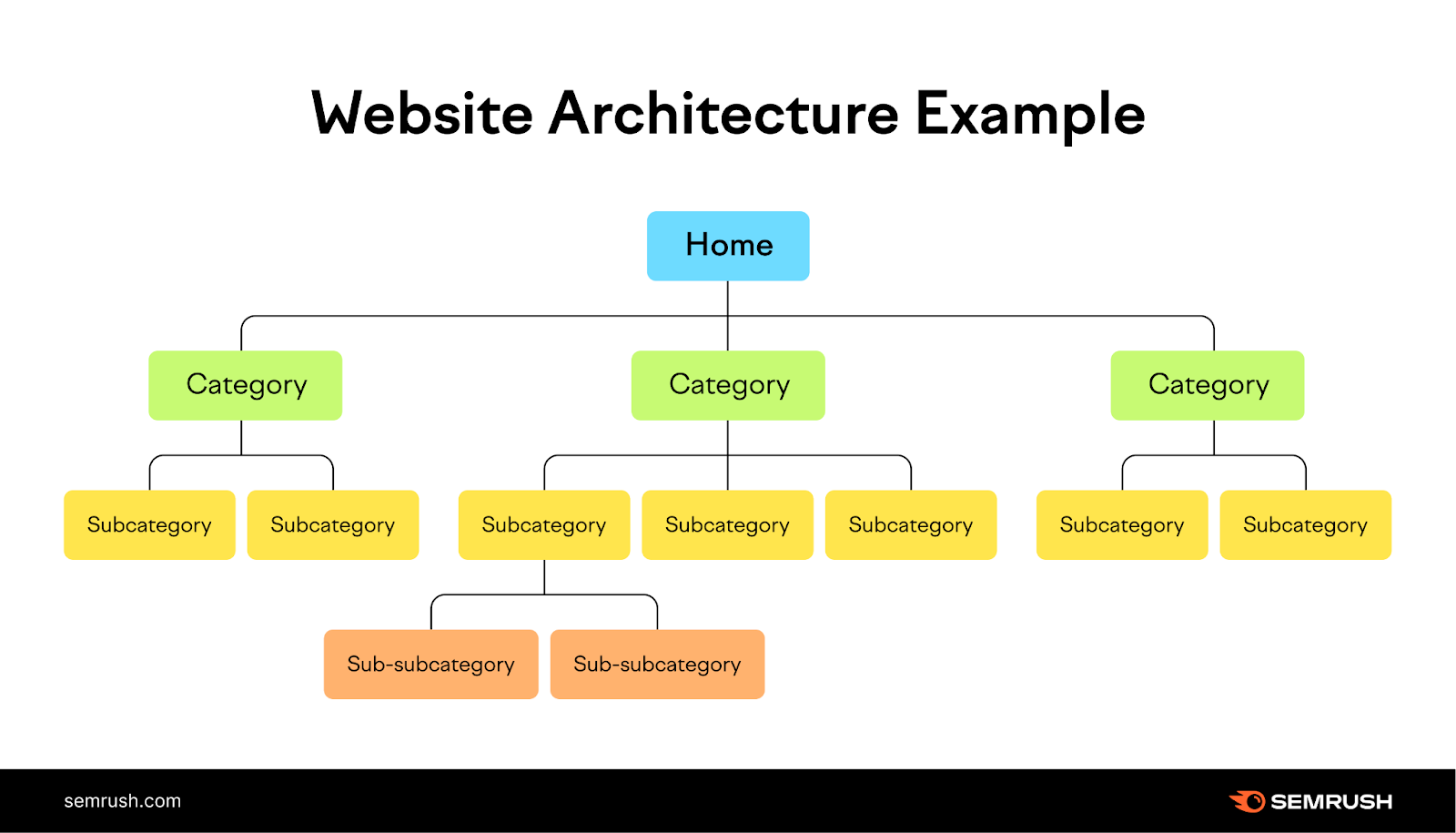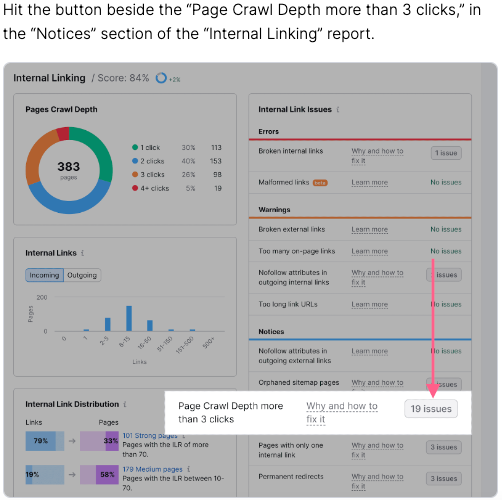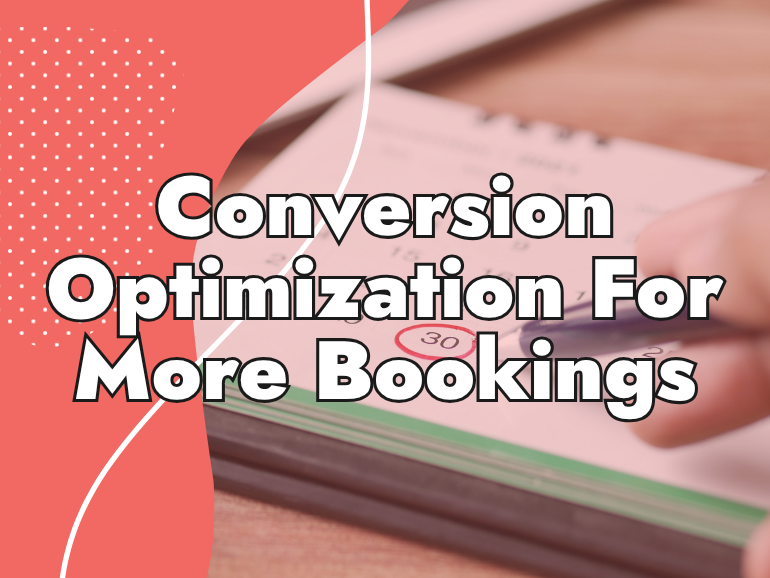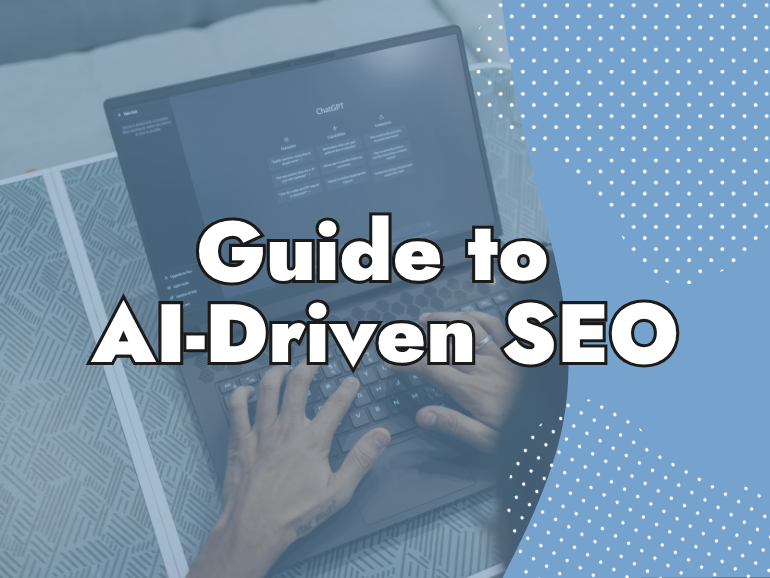How To Structure Your Website For SEO
A clear, well-organized website structure is key to SEO success and a great user experience. Learn how your site’s layout impacts search rankings, helps visitors navigate easily, and supports long-term growth for your online presence.
Written by Robin Namur
Last updated March 28, 2025 • First published May 20, 2024

Best Practices – Make Your Website User & Search Friendly
Your website is your baby, and when it’s done right, it can be a high-converting baby at that! Your business website is an essential part of your online presence, and if you want to compete, you can’t neglect the basics of SEO.
The thing is, it’s about more than keywords. Your website structure needs a solid SEO backbone if you want to improve your rankings and user engagement. As Clutch, a platform that rates and reviews service providers to help businesses make informed decisions, highlights:
Almost everyone (94%) says easy navigation is the most important website feature.
This statistic shows the importance of creating a user-friendly, well-structured website that meets SEO standards and helps visitors find what they need without hassle.
In this blog, we detail SEO-friendly website structure and the top tips for keeping your website competitive in a highly saturated digital world.
What Is An SEO-Friendly Website Structure?
To spell it out for you, an SEO-friendly website structure means organizing your website in a way that is easy to access and interpret by search engines. This is extremely important because if a search engine can’t understand the content on your website, it probably won’t be ranking it very highly.
Website structure refers to the way your website is organized. This includes the hierarchy of pages, the way content is grouped, and your website navigation. A well-structured website means users can easily find what they’re looking for, and search engines have no problem understanding it.
LIKE WHAT YOU’RE READING?
If these articles are helpful,
imagine what our team
can do for you!


More Traffic. Leads. Business.
I want to show you how SEO can grow your business in ways you haven’t seen before.
More Traffic. Leads. Growth.

I want to show you how SEO can grow your business in ways you haven’t seen before.
A properly structured website means a better user experience, faster indexing, and increased visibility in search results. It is, to put it succinctly, everything.
How To Structure Your Website For SEO
Consistent Heading Structure
A proper heading structure makes reading through large chunks of text easier. It also makes it easier for search engines to understand what’s important. A well-organized heading structure not only facilitates reader comprehension but also aids search engines in content indexing.
How To Create A Heading Structure:
- Use proper heading tags, such as H1 for the page title and H2 and H3 for subheadings.
- Use descriptive and relevant long-tail keywords in your headings.
- Keep your headings concise and avoid keyword stuffing.
Make sure you use a clear and consistent hierarchy of headings and subheadings so that search engines (and readers) can easily differentiate between main topics and subtopics.
Here’s a tip from leading industry experts Search Engine Journal on how to create consistent headers:
“A helpful way to think of header tags is by comparing them to a table of contents for a non-fiction book:
- Your H1 introduces the topic your page is all about, just as a title tells a reader what a book is all about.
- The H2s are akin to book chapters, describing the main topics you’ll cover in sections of the article.
- Subsequent headers, H3s to H6s, serve as additional subheadings within each section, just as a book chapter may be split up into multiple subtopics.”
Use Of Alt Tags
Images are integral to making your website visually appealing and also play a role in SEO. Alt tags help search engines understand the content of your images and improve the accessibility of your site for users with visual impairments. They’re used to describe images for search engines and include the image’s subject, the size of the image, and the file name.
How To Use Alt Tags:
- Use relevant keywords that accurately describe the image.
- Avoid keyword stuffing and keep your alt tags concise.
- Apply alt tags to all images on your website.
Using alt tags for website images is important for SEO and also helps to improve the accessibility of your website for users with disabilities.

Image from MozSEO showcasing the importance of Alt Tags.
Implement Schema Markup
Schema markup provides additional information about your content that’s only visible to search engines. Schema can help search engines extract important information from your website and display it in the search results, such as locations, hours, and contact information.
How To Use Schema Markup:
- Use structured data and schema.org vocabulary to add detailed markup to your website.
- Target relevant content such as reviews, events, and product descriptions with appropriate Schema types.
- Test your schema implementation using tools like Google’s Rich Results Test to ensure it is recognized and functioning correctly.
When implemented correctly, Schema markup can work some real magic for search engine visibility and click-through rates (CTRs).

XML Sitemap
An XML sitemap is a file with a list of all the pages on the website and can be submitted directly to Google to help discover and index all the pages on your site more efficiently. With Google’s enhancements to Search Console in 2024, submitting an XML sitemap is more effective than ever, speeding up the indexing process especially for new or updated content.
How To Create an XML Sitemap:
- Use a sitemap generator tool like Screaming Frog to create an XML sitemap.
- Include all pages on your website in your sitemap.
- Submit your sitemap to Google Search Console.
By creating an XML sitemap and submitting it to search engines, you can speed up the indexing of your website and make it easier for users to find your website in the SERPs.
Tips For SEO & User-Friendly Website Design
1. Use Internal Links
Internal linking makes it easy for users navigate between pages and helps search engines understand the content on your site. Make sure to link between related pages using descriptive anchor text and ensure links are relevant and add value for the user.
Check out our guide on internal linking best practices to learn how to link your pages efficiently.
2. Prioritize URLs In Your Navigation Bar
Ensure that your website’s menu follows navigation best practices. Your navigation bar should include links to the most important pages on your site. This helps users find what they need quickly and allows search engines to understand which pages are most important. Include links to your most important pages directly in the main navigation bar. Use clear and descriptive labels for each link, which include relevant keywords without stuffing.
3. Use The 3-Click Rule
Users should be able to find what they’re looking for within three clicks of landing on your site. Make this the goal when you’re organizing your site structure. Evaluate your website’s navigation regularly to remove any unnecessary layers that could complicate the user’s journey. You can try out Semrush’s Site Audit tool to discover which pages on your site are more than three clicks away from the homepage:

4. Use Breadcrumbs
Breadcrumbs are a navigational aid that shows users where they are on your website and how they got there. They also help search engines understand your site structure. Use breadcrumbs on all your pages, especially on those that are deeper in your site’s structure.
5. Use A Flat Site Architecture
A flat site architecture means that all pages on your website are accessible within a few clicks from the homepage (re: 3-click rule above). Organize content into broad categories that branch out into more specific topics, making it intuitive for both users and search engines to navigate.

Image showing how a flat website build allows search engine spiders to crawl all pages.
6. Optimize Your URL Structure
Use descriptive URLs that include relevant keywords when possible to help search engines understand what your page is about. Ensure consistency across your site by following a standard URL structure that includes lowercase letters and hyphens to separate words.
7. Fix Basic SEO Issues
Ensure there are no technical issues on your site that could negatively affect your rankings. Common problems include broken links, duplicate content, and slow page load times (aim for 2 seconds or less!). Regularly check for and fix broken links using tools like Ahrefs. Optimize page load times by compressing images, leveraging browser caching, and reducing server response times.
8. Create Great Content
There’s no magic bullet for SEO. Creating great content is the first and most important step for getting visitors to your website. Focus on creating content that answers your audience’s questions and provides real value. Optimize your titles, meta descriptions, and headers, and monitor your traffic and rankings to adjust what isn’t performing well.
9. Build For Smartphones
Google’s mobile-first indexing means that Google predominantly uses the mobile version of the content for indexing and ranking. Ensure that you have a mobile-first website design. One that is responsive, meaning it adjusts smoothly to any screen size. Simplify the mobile navigation to make it user-friendly and ensure all interactive elements are easily accessible.
Optimizing your website structure for SEO doesn’t have to be scary, but it IS essential for your online success. Don’t forget that stellar SEO is an ongoing process, so keep prioritizing the quality of your content and working on your SEO over time. By following these tips, you can create a website easy for users and search engines to navigate. With some patience and ongoing effort, you’ll see your rankings and traffic improve.
Ready To Give Your Website an SEO Overhaul?
You don’t have to do it alone. Our team at 1st on the List excels in creating (and hosting) SEO-friendly websites that not only look great but also perform in search rankings. The best website structure attracts and engages your ideal customers effectively.
Starting with a thorough website audit, we pinpoint areas for improvement, ensuring your website’s structure and design align perfectly with SEO best practices.
Whether you’re looking to overhaul your existing website or start a new project from scratch, we have the SEO expertise and experience to deliver results.
We are here to assist you in developing a website that stands out and delivers results. Contact us online or call our office at 1-888-262-6687 to set up a consultation.
FAQs About The Best Website Structure For SEO
Robin Namur
Robin Namur is a Senior Website Designer at 1st on the List with a strong background in development and website security. Her ability to capture our client’s style and vision while incorporating SEO and User Experience best practices puts her in high demand. Robin specializes in WordPress and website speed optimization. When not behind her desk Robin is out exploring her local Maple Ridge neighborhood with her dog Gunner.
Don’t miss out – get newest posts straight to your inbox!
OTHER ARTICLES WE THINK YOU’LL ENJOY
Partner With Us. Get More Leads.
Stop trying to do it all on your own – reach out to our team and we can discuss marketing strategies that are best suited for your business!
[NO HASSLE, NO PRESSURE, NO WORRIES – JUST MEANINGFUL INSIGHTS]








